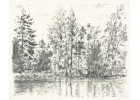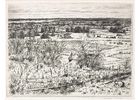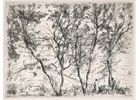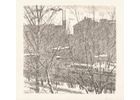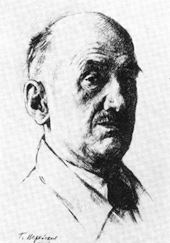
Russian and Soviet lithographer and etcher, master of portrait and landscape.
Vereisky was born into a family of entrepreneur. In 1895, after the family moved to Kharkov, he studied painting in the private studio of E.E. Schreider (1895, 1900–1904). In 1905, he was arrested for participating in the revolutionary movement, was let out on bail and later emigrated. He visited Austro-Hungary, Germany and Italy. In 1911, he settled in St. Petersburg where he continued his law education, which he had started in the Kharkov University, and graduated with a law degree in 1912.
Vereisky studied
under Mstislav Dobuzhinsky, Boris Kustodiev and Anna Ostroumova-Lebedeva in the
New Arts Studio in St. Petersburg (1913–1916). He was a member Mir iskusstva [“The
World of Art”] association, collaborated with the Teatr i iskusstvo [“Theatre
and Art”] magazine where he published portraits, caricatures, sketches of
theatre life. After 1917, he worked at the Prints Section of the Hermitage
(1918-1930), taught at the Higher Art and Technical Institute (VHUTEIN)
(1918–1922), the Higher Institute of Photography and Photographic Technique (from
1918), the Central School of Technical Drawing (1918—1919), the Higher Art and
Technical Studios (VHUTEMAS) (1921–1923), and also at the Experimental
Lithographic Studio which he himself organised (the Leningrad Branch of the
Union of Artists) (1937–1940) and which became an important art school and had
a serious role to play in the development of Soviet lithography.

